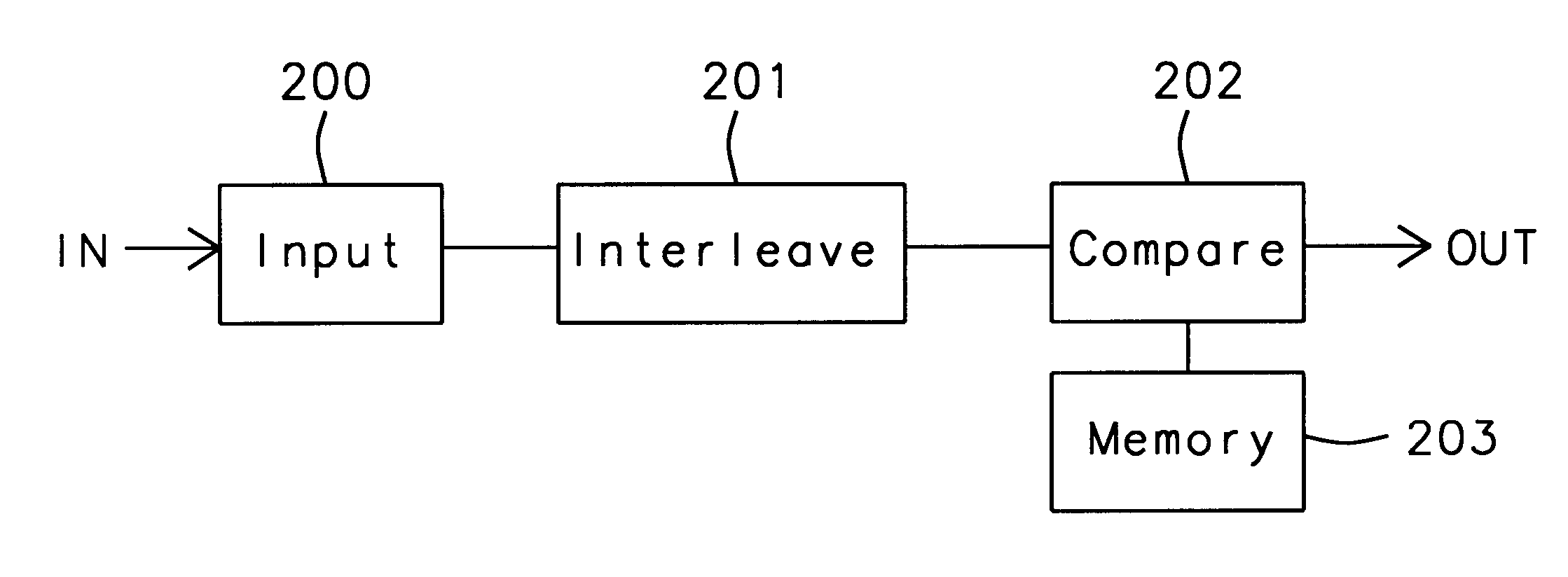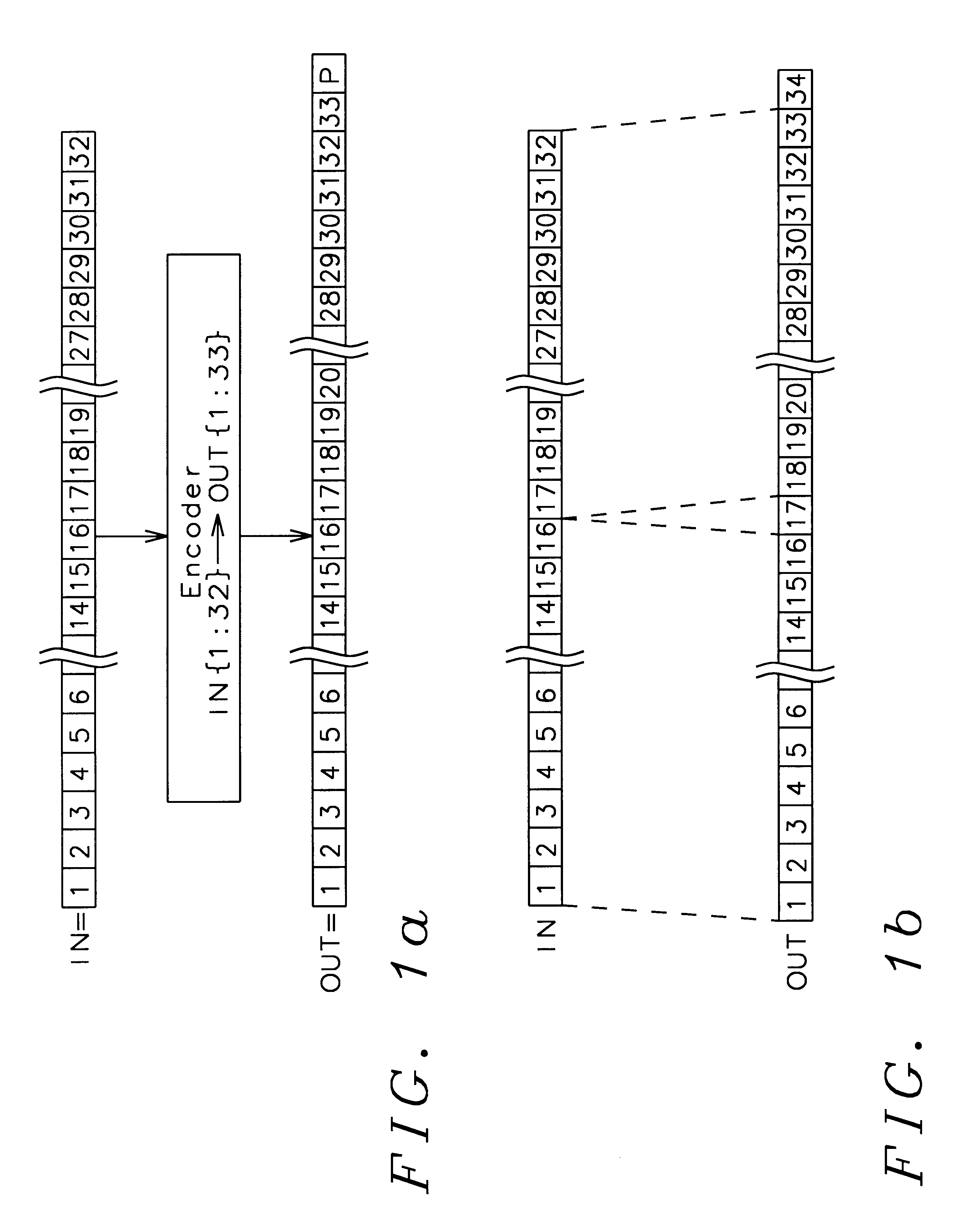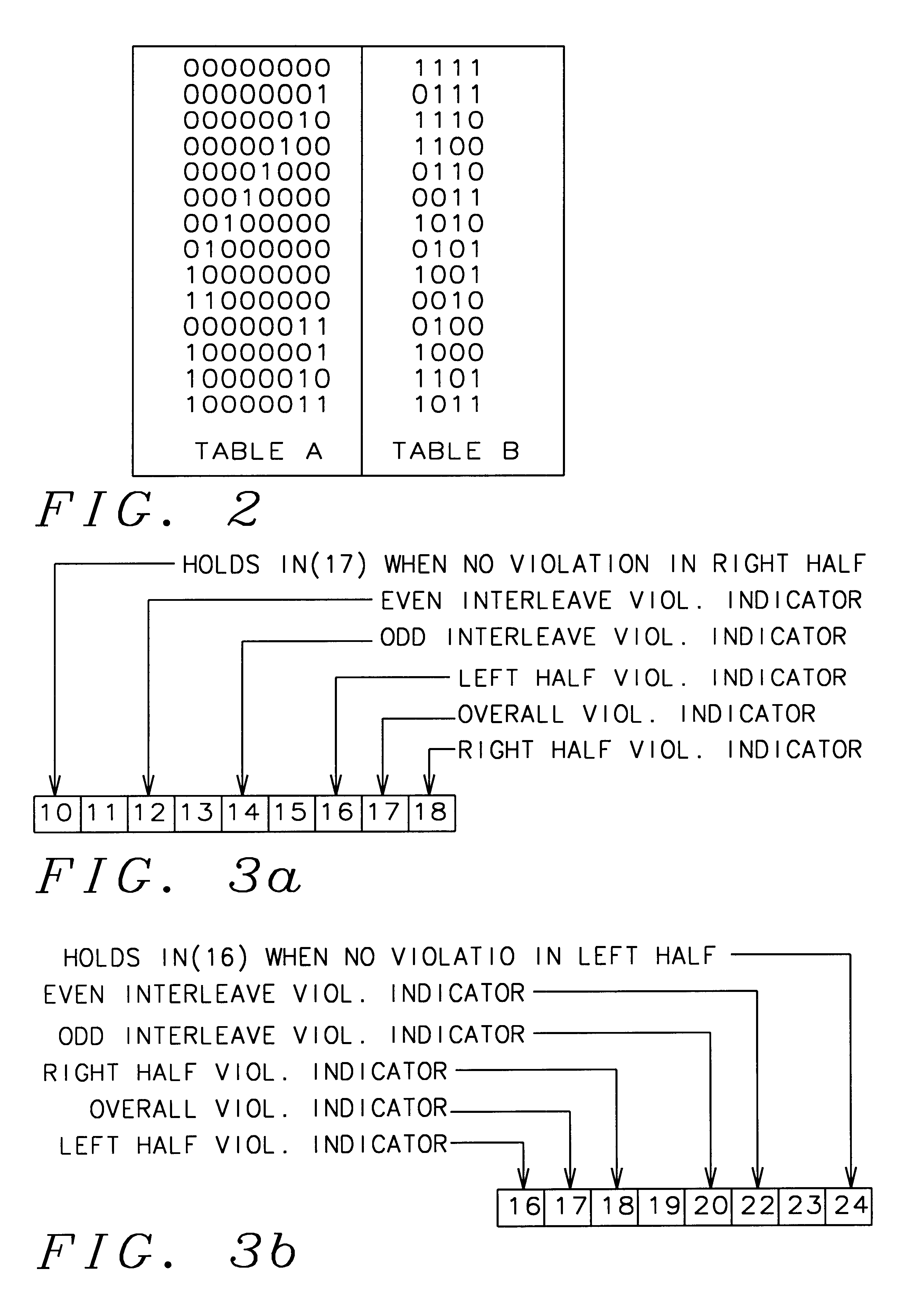Technique to construct 32/33 and other RLL codes
a technology of rll codes and codes, applied in the field of encoding digital words, can solve the problems of difficult timing and gain recovery of transmitted or stored signals, and achieve the effects of minimizing global constraints, minimizing interleave constraints, and facilitating analysis
- Summary
- Abstract
- Description
- Claims
- Application Information
AI Technical Summary
Benefits of technology
Problems solved by technology
Method used
Image
Examples
Embodiment Construction
In FIG. 1a is shown an input word IN applied to an encoder to produce a coded output word OUT. The input word IN is made up of thirty two bits and the coded output word OUT is a thirty three bit word plus parity P. The encoder follows a set of rules to translate the thirty-two bit input word IN into the thirty-three bit output word OUT. The notation IN(1:32) within the encoder block is shorthand for the input word starting at bit "1" and ending at bit "32". The same short hand applies to OUT(1:33). After the thirty-three bit output word is formed a parity bit P is added which makes the output word OUT thirty-four bits long, OUT(1:34).
In FIG. 1b is shown the mapping of the input word IN(1:32) through the encoder into the output code word OUT(1:33). The thirty fourth bit position in the OUT code word is the parity bit designated as "P". The left half of the bit positions of IN={in(1), in(2), in(3), . . . in(15), in(16)} map directly into the left half bit positions of the code word OU...
PUM
 Login to View More
Login to View More Abstract
Description
Claims
Application Information
 Login to View More
Login to View More - R&D
- Intellectual Property
- Life Sciences
- Materials
- Tech Scout
- Unparalleled Data Quality
- Higher Quality Content
- 60% Fewer Hallucinations
Browse by: Latest US Patents, China's latest patents, Technical Efficacy Thesaurus, Application Domain, Technology Topic, Popular Technical Reports.
© 2025 PatSnap. All rights reserved.Legal|Privacy policy|Modern Slavery Act Transparency Statement|Sitemap|About US| Contact US: help@patsnap.com



